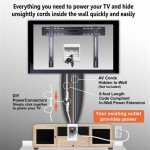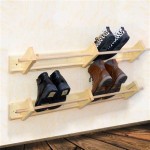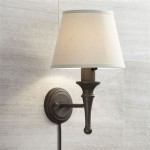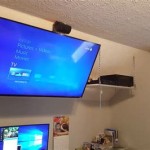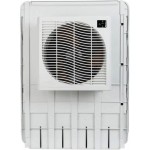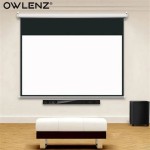Philips 65 Inch TV Wall Mount: A Comprehensive Guide
Mounting a Philips 65-inch television on a wall provides a sleek, modern aesthetic while also optimizing space within a living area. Selecting the appropriate wall mount is critical for ensuring the safety and stability of the television, as well as achieving the desired viewing angle. This article will provide a detailed guide to understanding the different types of wall mounts available, the important factors to consider when choosing a mount, the installation process, and essential safety precautions for a Philips 65-inch television.
The size and weight of a 65-inch television necessitate a robust and reliable mounting solution. Philips 65-inch TVs typically weigh between 40 and 60 pounds, depending on the specific model and features. Therefore, the selected wall mount must be rated to support this weight capacity with a significant margin of safety. Failure to choose a mount with an adequate weight rating could lead to the television falling from the wall, causing damage to the television, the wall, and potentially leading to personal injury.
Before proceeding with any wall mounting project, it is crucial to identify the wall type. Walls are generally constructed of drywall over wood studs, concrete, or brick. The mounting hardware required will vary significantly based on the wall type. Drywall alone is not strong enough to support the weight of a 65-inch television and requires anchoring to the underlying wood studs. Concrete and brick walls offer a more solid base, but require specialized anchors and drilling techniques.
Understanding the VESA (Video Electronics Standards Association) mounting pattern is also essential. The VESA pattern refers to the standardized hole pattern on the back of the television used for attaching the wall mount. This pattern is usually expressed in millimeters (e.g., 400x400mm). Before purchasing a wall mount, confirm that the VESA pattern of the mount matches the VESA pattern of the Philips 65-inch television. This information can usually be found in the television's product specifications or by measuring the distance between the mounting holes on the back of the TV.
Types of Wall Mounts
Several types of wall mounts are available for Philips 65-inch televisions, each offering different features and benefits.
Fixed Mounts: These mounts are the simplest and most cost-effective option. They hold the television close to the wall, typically within an inch or two. Fixed mounts provide a clean, minimalist look but offer limited adjustability. Once installed, the television remains in a fixed position, with no tilting or swiveling capabilities. This type of mount is suitable for situations where the viewing angle is already optimal.
Tilting Mounts: Tilting mounts allow the television to be tilted vertically, typically up to 15 degrees. This feature can help reduce glare from windows or overhead lights and can improve the viewing angle from certain positions in the room. Tilting mounts are a good compromise between fixed mounts and full-motion mounts, offering some adjustability without the added complexity and cost of a full-motion mount.
Full-Motion Mounts (Articulating Mounts): These mounts offer the greatest flexibility, allowing the television to be tilted, swiveled, and extended away from the wall. Full-motion mounts are ideal for situations where the viewing angle needs to be adjusted frequently, such as in rooms with multiple seating areas or where the television is being viewed from different positions. They can also be useful for accessing the back of the television for cable management or connecting devices. However, full-motion mounts are typically more expensive and require more complex installation than fixed or tilting mounts.
Factors to Consider When Choosing a Wall Mount
Selecting the right wall mount for a Philips 65-inch television requires careful consideration of several factors:
Weight Capacity: As previously mentioned, the weight capacity of the wall mount is paramount. Choose a mount that is rated to support at least the weight of the television with a safety margin of at least 20%. This will ensure that the mount can handle the weight of the television even if it is subjected to minor vibrations or accidental bumps.
Wall Type: Determine the type of wall on which the television will be mounted. If mounting on drywall, locate the wood studs and ensure that the mount is designed to be attached to studs. Use a stud finder to accurately locate the studs, marking their positions clearly. If mounting on concrete or brick, use appropriate anchors and drilling techniques. Consult with a professional if unsure about the correct mounting procedure for a specific wall type.
VESA Compatibility: Verify that the VESA pattern of the wall mount matches the VESA pattern of the Philips 65-inch television. This information is usually available in the television’s product specifications or can be measured directly on the back of the television.
Range of Motion (for Tilting and Full-Motion Mounts): If choosing a tilting or full-motion mount, consider the range of motion required. Ensure that the chosen mount provides sufficient tilt angle to reduce glare and sufficient swivel angle to optimize the viewing angle from different positions in the room. Also, consider the extension range of full-motion mounts to ensure that the television can be pulled out far enough for comfortable viewing.
Cable Management: Look for wall mounts that include cable management features, such as cable clips or channels. These features will help to keep cables organized and out of sight, creating a cleaner and more aesthetically pleasing installation. Poor cable management can detract from the overall look of the mounted television and can also create a safety hazard.
Ease of Installation: Consider the ease of installation of the wall mount. Some mounts are designed for easy installation and come with detailed instructions and all necessary hardware. Others may require more advanced skills and tools. If uncomfortable with the installation process, consider hiring a professional installer.
Installation Process and Safety Precautions
The installation of a Philips 65-inch television wall mount requires careful planning and execution to ensure the safety and stability of the mounted television.
Gather Tools and Materials: Before beginning the installation process, gather all necessary tools and materials, including a stud finder (if mounting on drywall), a level, a drill, appropriate drill bits (for wood, concrete, or brick, depending on the wall type), a screwdriver (Phillips head and/or flathead), a measuring tape, a pencil, and safety glasses.
Locate Studs (for Drywall): Use a stud finder to locate the wood studs behind the drywall. Mark the positions of the studs clearly with a pencil. It is crucial to attach the wall mount to the studs to ensure adequate support for the television.
Attach the Mounting Brackets to the Television: Attach the mounting brackets to the back of the television using the screws provided with the wall mount. Ensure that the brackets are securely attached and that the screws are tightened properly.
Attach the Wall Plate to the Wall: Position the wall plate on the wall at the desired height and alignment. Use a level to ensure that the wall plate is perfectly level. Mark the positions of the mounting holes on the wall. Drill pilot holes at the marked locations. For drywall installation, align the pilot holes with the studs. For concrete or brick installation, use appropriate anchors and drill bits. Secure the wall plate to the wall using the screws or anchors provided with the wall mount. Ensure that the wall plate is securely attached and that the screws or anchors are tightened properly.
Hang the Television on the Wall Plate: Carefully lift the television and align the mounting brackets with the wall plate. Hang the television on the wall plate, ensuring that it is securely seated. Some wall mounts may have a locking mechanism to prevent the television from being accidentally dislodged.
Adjust the Television (if necessary): If using a tilting or full-motion mount, adjust the tilt and swivel angles to achieve the desired viewing angle. Tighten any locking mechanisms or screws to secure the television in the adjusted position.
Cable Management: Route the cables through the cable management features of the wall mount, if available. Use cable ties or clips to keep the cables organized and out of sight. Connect the cables to the television and to any other devices, such as a cable box or Blu-ray player.
Safety Precautions: Before, during, and after installation, several safety precautions should be adhered to.
- Turn off and unplug the television before beginning the installation process.
- Wear safety glasses to protect eyes from dust and debris.
- Ensure that the wall is strong enough to support the weight of the television and the wall mount.
- Use appropriate anchors and drilling techniques for the specific wall type.
- Follow the manufacturer's instructions carefully.
- Get assistance when lifting and mounting the television to avoid injury.
- Double-check all connections to ensure they are secure.
Troubleshooting Common Issues
Even with careful planning and execution, some common issues may arise during the installation of a Philips 65-inch television wall mount.
Wall Mount Not Level: If the wall mount is not level, the television will also be tilted. Use a level to verify the levelness of the wall plate and the television. If necessary, loosen the mounting screws and adjust the position of the wall plate until it is level. Retighten the mounting screws securely.
Television Not Securely Attached: If the television is not securely attached to the wall plate, it may wobble or even fall off the wall. Verify that the mounting brackets are properly aligned with the wall plate and that all screws or locking mechanisms are securely fastened. If necessary, remove the television from the wall and reattach the mounting brackets and wall plate, ensuring that all connections are tight.
Cables Not Properly Managed: If the cables are not properly managed, they may be unsightly and could potentially be a tripping hazard. Use cable ties or clips to organize the cables and keep them out of sight. Consider using cable concealers to hide the cables completely.
Incompatible VESA Pattern: If the VESA pattern of the wall mount does not match the VESA pattern of the television, the mounting brackets will not align with the mounting holes on the back of the television. Verify the VESA patterns of both the wall mount and the television before beginning the installation process. If they are incompatible, return the wall mount and purchase one that is compatible.
Mounting a Philips 65-inch television to the wall is a rewarding project that enhances both the viewing experience and the aesthetic of the living space. By carefully considering the types of wall mounts available, the factors influencing the selection process, and the necessary safety precautions, one can achieve a secure and visually appealing installation. When in doubt, seeking professional assistance from a qualified installer ensures a safe and successful mounting experience, contributing to long-term enjoyment of the home entertainment system.

Looking For A Philips Tv Wall Mount One All

Philips Sqm7442 Grs Tv Wall Mount 30 65 Vesa 400 X Soundstar

Philips Sqm7442 Grs Tv Wall Mount 30 65 Vesa 400 X Soundstar

Philips Tv Wal Mount Full Motion Indoor Wall Fits Tvs Up To 90 In Hardware Included Sqm9647 27 At Com
Philips 40 To 65 Universal Tilting Tv Wall Mount Ee Malaysia

Fits 65pus8204 12 Philips 65 Tilt Swivel Tv Bracket Wall Mount Uk

Philips S Tv 65pug7419 65 Led 4k Uhd Google

New Philips 65 Inch 4k Tv And Wall Mounting

Philips Full Motion Tv Wall Mount For Up To 80 15 Degree Tilt

Philips Tilt Tv Wall Mount For Up To 80 3 Degree Wal Com

